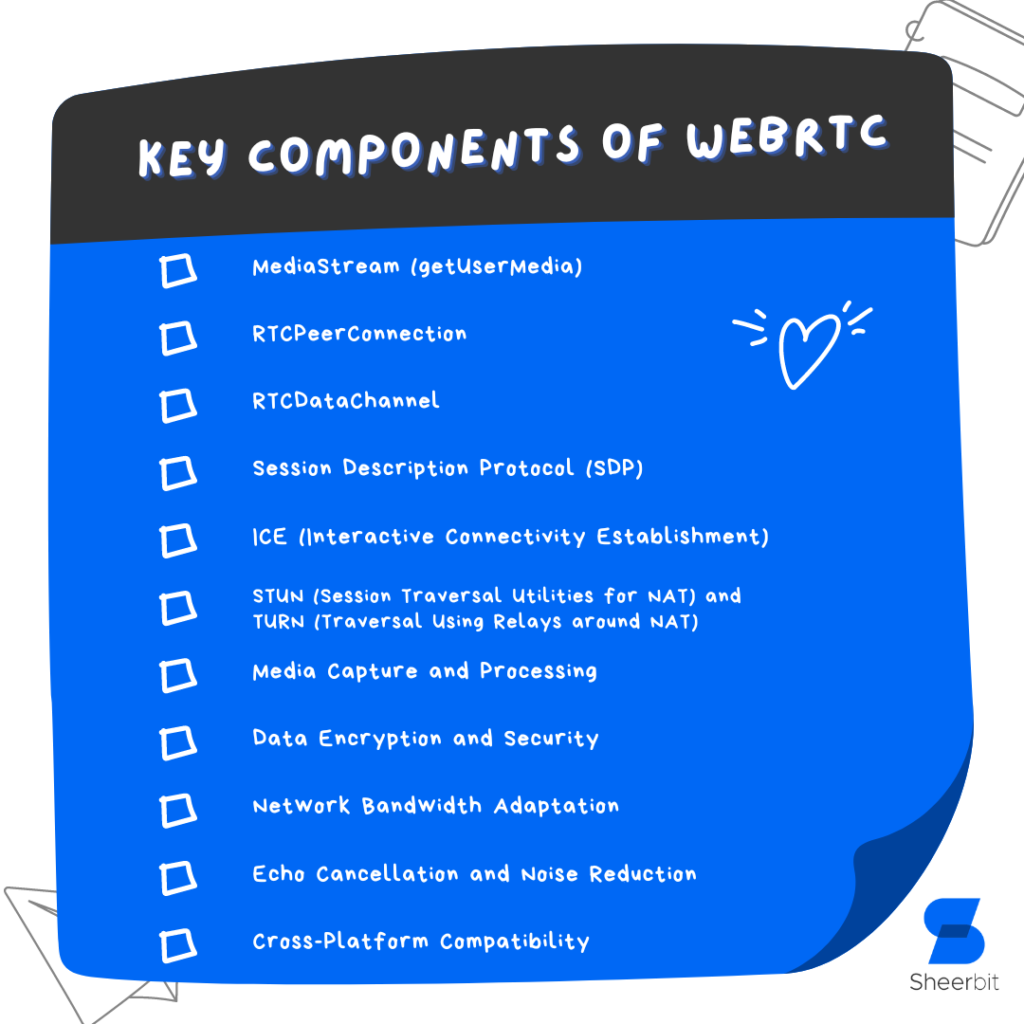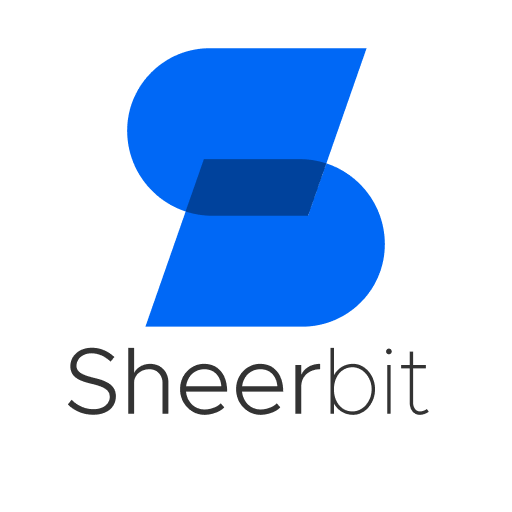Communication is the very lifeblood that keeps our connections alive in the complex web of today’s world. Whether they are professional partnerships across continents or very personal talks with dear friends and family. In this day and age, where boundaries vanish into the digital sphere, the need for smooth communication becomes essential. Presenting WebRTC (Web Real-Time Communication), a revolutionary technology that completely changes the way people communicate online. Through the pages of this blog, we will take a deep dive into the fundamentals of WebRTC and break down its complex architecture to give you a deeper understanding.
Time is becoming more compressed, and distance is less important in society. Where seamless communication is crucial for human connection and productivity. It is now more than just convenient. Redefining the bounds of virtual connection, WebRTC emerges as a beacon of innovation that seamlessly bridges the barriers between individuals and organizations. As we set out on this journey, we probe more into the complex mechanisms of WebRTC. Unraveling its inner workings to provide light on the way to improved connection and engaging online experiences.
Understanding WebRTC:
An open-source project called WebRTC makes communicating in real-time within web browsers and applications possible. WebRTC, which Google, Mozilla, and Opera developed, makes communication simple and quick by doing away with the requirement for third-party plugins or software downloads. Data, video, and audio sharing are all possible thanks to its smooth web browser integration, all without sacrificing security or quality.

Key Components of WebRTC:
1. MediaStream (getUserMedia):
WebRTC’s foundation is MediaStream, which is frequently accessible via the getUserMedia API. It enables real-time media capture and transmission by giving web apps access to the user’s screen, microphone, and camera. This component ensures a rich and immersive communication experience while facilitating the seamless transmission of audiovisual data.
2. RTCPeerConnection:
By creating a direct peer-to-peer connection between users, RTCPeerConnection allows media streams to be sent with the least amount of delay possible. RTCPeerConnection negotiates network parameters and creates secure channels for data exchange using a procedure called signaling. This element serves as the foundation for WebRTC and enables peer-to-peer communication in a variety of network scenarios.
3. RTCDataChannel:
While audio and video transmission forms the foundation of WebRTC, RTCDataChannel facilitates peer-to-peer data transfer. Developers may now construct dynamic apps and immersive collaborative experiences by leveraging this component, which facilitates the smooth transmission of arbitrary data between users.
4. Session Description Protocol (SDP):
Within WebRTC, SDP acts as the negotiating language, allowing peers to share session information more easily. Device capabilities, including network settings and acceptable media formats, are sent using SDP, allowing for easy interoperability in a variety of scenarios. This protocol is essential to create connections and maximize media transmission inside the WebRTC environment.
5. ICE (Interactive Connectivity Establishment):
A vital part of WebRTC, ICE makes sure that connections are stable even in the face of network barriers like firewalls and NAT. By identifying the most effective communication channel between peers, ICE improves dependability and lowers latency through candidate collecting and connection checks. WebRTC apps can effortlessly adjust to changing network circumstances because of this dynamic technique of traversing the network.
6. STUN (Session Traversal Utilities for NAT) and TURN (Traversal Using Relays around NAT):
STUN and TURN servers provide P2P communication in WebRTC applications. Its servers enable devices to communicate directly whenever feasible by assisting in the discovery of public IP addresses and network topology. TURN servers relay media streams between peers in situations when direct peer-to-peer connection is impractical, guaranteeing ongoing communication even in constrained network conditions. When combined, STUN and TURN servers improve WebRTC applications’ robustness and dependability while guaranteeing smooth communication over a range of network settings.
7. Media Capture and Processing:
In addition to being a communication tool, WebRTC has powerful media capture and processing features. Developers provide a multitude of creative applications and use cases. Easy access to and manipulation of audiovisual streams via APIs like MediaDevices and MediaRecorder. Developers may now fully utilize the possibilities of multimedia communication within web apps using WebRTC, from immersive multimedia experiences to real-time video conferencing.
8. Data Encryption and Security:
Every communication protocol, including WebRTC, must prioritize security. Robust encryption techniques are included in WebRTC to protect private information shared between peers. End-to-end encryption is ensured by WebRTC with the use of Secure Real-Time Transport Protocol (SRTP) and Datagram Transport Layer Security (DTLS), safeguarding user privacy and communication integrity. This focus on security builds user confidence and supports WebRTC’s suitability for a range of applications, such as private corporate conversations, telemedicine, and financial transactions.
9. Network Bandwidth Adaptation:
Under different network circumstances, WebRTC dynamically modifies media streams to maximize resource utilization and improve user experience. Based on available network resources and device capabilities, WebRTC automatically adjusts media quality through methods like bandwidth estimate and congestion control algorithms. This adaptive behavior minimizes interruptions and maintains constant video quality, ensuring seamless conversation even in areas with limited bandwidth. WebRTC continues to be a flexible option for real-time communication. In a variety of contexts by putting the user experience and network performance first.
10. Echo Cancellation and Noise Reduction:
For WebRTC-enabled real-time interactions, clear audio is crucial for efficient communication. To improve audio quality and eliminate undesired distortions, WebRTC uses sophisticated signal processing techniques, including noise reduction algorithms and echo cancellation. WebRTC guarantees crystal-clear audio transmission by reducing ambient noise and echo artifacts, promoting organic and engaging dialogues. Overall, the user experience is enhanced, and the focus on audio quality promotes smooth communication across different devices and circumstances.
11. Cross-Platform Compatibility:
Wide-ranging platform compatibility is provided by WebRTC, including native apps, mobile devices, and desktop browsers. Its standardized APIs and protocols allow popular web development frameworks and programming languages to be integrated with it with ease. Users should anticipate similar functionality and performance when visiting WebRTC-enabled iOS, Android, Windows, or macOS applications. Improved accessibility is achieved by the wider use of WebRTC by diverse user demographics and use cases due to its cross-platform portability.
Embracing Seamless Communication:
In the hyperconnected world of today, communication that is fluid and cross-border encourages cooperation and creativity in a variety of fields. WebRTC facilitates global real-time communication and is used to power online multiplayer games, virtual meetings, and remote support. Organizations and developers may unleash a plethora of opportunities and drive engagement and connectedness like never before by using its essential components.
Conclusion:
In Conclusion, WebRTC is evidence of the revolutionary potential of technology in reshaping the digital world. MediaStream, RTCPeerConnection, and RTCDataChannel are three of its essential parts. Serve as the cornerstones of seamless communication, enabling people and organizations to interact, cooperate, and prosper in a world growing more linked by the day.
When using WebRTC for the first time, remember to utilize it properly and always put security, privacy, and user experience first. Let’s work together to harness the potential of seamless communication to create a future that is more inclusive and connected. Get in touch with us to find out how WebRTC may completely transform your approach to communication.





